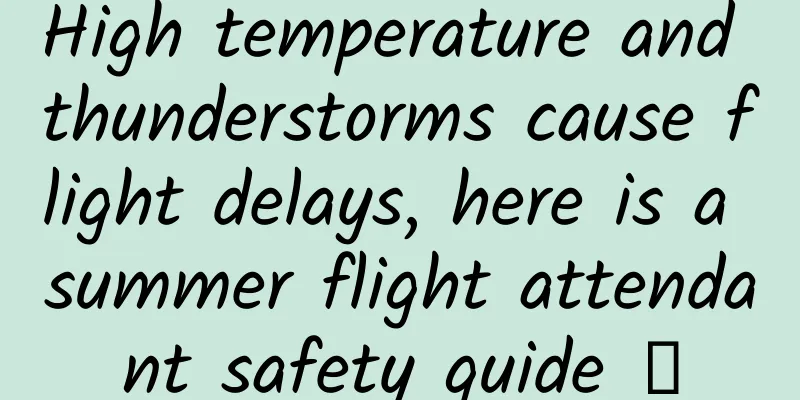After 0.01% atropine eye drops came on the market, are Chinese children's myopia cured?

|
"One drop a day can delay children's myopia", "The effect is immediate and better than OK glasses", "One drop before bedtime, no increase in myopia in half a year"... In the past few years, many parents have regarded atropine as a "miracle drug for myopia". Even though it has not been approved for sale in mainland China, atropine has been on parents' shopping lists for many years due to its excellent efficacy and simple operation method. Its popularity is comparable to that of another popular "magic drug for weight loss", semaglutide. Recently, atropine finally received a blockbuster news. In March 2024, the National Medical Products Administration officially approved Xingqi Eye Drops' 0.01% concentration of atropine for alleviating myopia in children, which means that China has the first officially marketed prescription drug for controlling myopia - atropine sulfate eye drops. This is undoubtedly good news for children who already have myopia. Parents no longer have to go through so much trouble to obtain this "miracle drug for myopia". However, after atropine was successfully launched on the market, many problems followed. Is atropine with a concentration of 0.01%, often called a "placebo", really effective? As low-concentration atropine becomes more accessible, is there a risk of abuse? Let's talk about this in this issue of "Eye Health is Real". 1. Many parents spend a lot of money to buy atropine, and there are many chaos in the purchase of atropineLong before atropine eye drops were approved for marketing, many children had already used the drug. In order to better control their children's myopia, parents spend a lot of money to obtain atropine eye drops from various channels. Among them, "overseas purchasing" and "in-hospital preparations" are the two most common ways to obtain atropine eye drops. It is not difficult to understand why overseas purchasing agents buy drugs. They mainly go to Hong Kong, Taiwan, Singapore and other places. Atropine sulfate eye drops in these regions are already on the market and can be purchased with a doctor's prescription. For example, Latropine, developed and produced by Taiwan pharmaceutical company Wufu Chemical Pharmaceutical Co., Ltd., is very popular among purchasing agents. However, overseas purchasing agents cannot guarantee the price and quality of drugs. In November 2022, some netizens said that the purchasing price of Letuopin rose from 40-60 yuan at the beginning to 108 yuan per box, "getting more and more expensive, and getting harder and harder to buy." Compared with the continued rise in prices, buying fakes is even more frustrating. According to the Peninsula Metropolis Daily, a woman bought atropine through a purchasing agent. After testing, it turned out that there was no atropine component, just an ordinary ciliary muscle paralysis drug. In-hospital preparations are another common channel for obtaining atropine. Before atropine was officially approved, Xingqi Eye Drops' atropine was launched in some hospitals as an in-hospital preparation and sold in Internet hospitals. In 2021, Xingqi Eye Drops earned about 280 million yuan in drug revenue from atropine alone. However, the drug was suspended from online sales on July 22, 2022, and is only sold normally in hospitals. After the Internet Hospital suspended online sales, the price of atropine soared sixfold. "One purchase cost 298 yuan, and the errand fee was 200 yuan," a netizen recorded his experience of purchasing atropine on social media. Unable to buy atropine, some parents began to change their thinking and prepare low-concentration atropine on their own. Searching on a social media platform, it is found that there are many people who prepare their own atropine. Usually, the hospital prescribes high-concentration atropine, and parents go home to prepare it according to the formula sheet. However, after all, it is something that goes into the eyes, and no one can guarantee whether the self-prepared atropine is sterile or whether it will cause eye infection in children. Parents will do anything to achieve their goals, whether it is to buy at a high price or to buy it on their own if they can't buy it. This also indirectly reflects that there is a great demand for myopia prevention and control among young people today. The approval of atropine also means that it has been successfully "regularized" in mainland China, and parents can buy it and use it with more peace of mind. But will there be no new problems in the future? 2. Is 0.01% atropine a “miracle drug” or a “placebo”?The atropine eye drops approved for marketing this time have a concentration of 0.01%, but in fact, the effectiveness of this concentration of atropine in preventing and controlling myopia has always been controversial. Atropine is divided into two types according to its concentration: high-concentration atropine (abbreviated as "high atropine") and low-concentration atropine (abbreviated as "low atropine"). 1% concentration of Goa is usually used for children's mydriasis eye examination. Before the eye examination, the doctor will drop a kind of medicine into the child's eyes. After the drops are applied, the child's vision will become blurry, and there will even be a feeling of dry mouth. This medicine is "Goa". The main function of Goa is to paralyze the ciliary muscles in the eye and temporarily inhibit the adjustment power, making the eye examination degree more accurate. In 1989, scholars in Taiwan reported for the first time that long-term use of atropine by myopic children can significantly inhibit the growth of the anterior-posterior diameter of the eyeball (i.e., the eye axis), thereby slowing down the progression of myopia. This was undoubtedly an "unexpected surprise" in the clinical use of atropine. However, researchers have also found that the higher the concentration of atropine, the more obvious the side effects. When using high atropine, children will experience adverse reactions such as photophobia, increased intraocular pressure, blurred vision, and even glaucoma and acute keratitis. Moreover, myopia will rebound after stopping the drug, and the higher the concentration, the more obvious the rebound effect. Therefore, the scientific community has been exploring the optimal concentration for myopia control. In 2016, the famous Singapore ATOM2 trial proved that compared with 0.5% and 0.1% atropine, 0.01% atropine eye drops can more effectively slow the progression of myopia within 5 years with fewer side effects, and is recommended as the first-line treatment for progressive myopia in children aged 6 to 12 years. In 2022, China's "Expert Consensus on the Application of Low-Concentration Atropine Eye Drops in the Prevention and Control of Myopia in Children and Adolescents (2022)" was released, further indicating that 0.01% concentration of atropine is suitable for myopic people aged 4 to adolescence. At present, the consensus of guidelines in many countries recommend 0.01% concentration of atropine as a drug for the prevention and control of myopia in children. However, the most famous study on low-atropine in recent years, a low-concentration atropine for preventing and treating myopia (LAMP) study conducted by the Chinese University of Hong Kong, proposed a new optimal concentration of 0.05%. The research team recruited 438 children aged 4-12 years old, all of whom had at least 100 degrees of myopia in both eyes and increased by more than 50 degrees in the past year, and gave these children 0.05%, 0.025%, 0.01% atropine or placebo. In the three-year study, it was found that 0.05% atropine was the best concentration for delaying myopia, and the myopia rebound rate was very small. Since then, more and more literature has pointed out that although 0.01% atropine is the safest concentration, unfortunately, the control effect of this concentration is also the weakest. In 2023, an ophthalmology team from the Chinese University of Hong Kong published a major study in JAMA, stating that in non-myopic children aged 4-9, atropine at a concentration of 0.05% was effective in preventing myopia, while the effect of atropine at a concentration of 0.01% on preventing myopia was no different from that of the placebo group. Also in 2023, a paper published in the internationally renowned journal JAMA Ophthalmology pointed out that 0.01% atropine eye drops are ineffective in slowing the progression of myopia and axial length growth in American children. This series of studies directly pushed the effects of 0.01% atropine to the forefront of public opinion, causing 0.01% atropine to become a "placebo." In this regard, many ophthalmologists in the industry said that the 0.01% concentration is a compromise option that takes into account both efficacy and safety, and the first approved drugs tend to be low-concentration and high-safety. However, some experts also pointed out that the best atropine concentration to control the progression of myopia in adolescents should be the best balance between "efficacy" and "side effects." If children's myopia progresses rapidly, they should pursue higher concentrations of efficacy while tolerating side effects. More clinical studies will be needed in the future to confirm which concentration of atropine, 0.01% or 0.05%, is more beneficial. 3. Atropine is not a miracle drug and is not suitable for everyoneCompared with the poor effect of 0.01% atropine, off-label use and even abuse may become the biggest problem faced by low-atropine after it is launched on the market. At present, Xingqi Eye Medicine's atropine eye drops contain 30 drops per box, each 0.4 ml, and the price per box is 298 yuan. The annual cost is about 3,500 yuan. If calculated based on continuous use for three years, the cost is about 10,500 yuan. Compared with OK lenses and defocused soft lenses that cost 9,000-15,000 yuan per year, it has a higher cost-effectiveness. And its use method is also very simple, just drop it in the eyes before going to bed, and then press the inner corner of the eye. Due to its easy operation, high cost-effectiveness and easy availability, low-concentration atropine is bound to be favored by more parents of myopic children. However, since it is a prescription drug, it must have a range of use. The approved Xingqi Eye Drops 0.01% Atropine is indicated for myopia ranging from 100 to 400 degrees, astigmatism not exceeding 150 degrees, and is suitable for children aged 6 to 12 years old. According to the "Expert Consensus on the Use of Low-Alpha" in my country, the drug is suitable for use for ages 4-16. If the patient is older than 16 but myopia is still progressing rapidly, the drug can be used until the age of 25, but it is forbidden for children under 3 years old. The consensus also points out that it is recommended for use only when the myopia is greater than 50 degrees and the myopia progresses by more than 50 degrees each year. But in fact, some parents had already begun to use atropine unreasonably before it was approved for marketing. For example, some parents will use atropine for children under 3 years old, or the children do not have myopia but have lost their hyperopia reserve, so parents start to use atropine to prevent myopia out of anxiety. For some children, the degree of myopia does not progress by more than 50 degrees in a year, and they only need to be observed, but parents still use atropine for their children. We don’t know whether this situation will get worse after atropine is officially launched on the market. But it must be emphasized that even low-concentration atropine can easily lead to increased intraocular pressure. If a child has a family history of high intraocular pressure, it may also induce glaucoma. If the child is allergic, allergic reactions such as conjunctival congestion, skin itching, and fever may occur. If it is necessary to use it, it should be used after evaluation and guidance by a doctor, and it must not be used blindly. In addition, children should be observed regularly while using atropine, and it is best to go to the hospital for a check-up every 3 months to ensure safety and evaluate the effectiveness. Finally, the prevention and control of myopia is not mainly based on drugs, but on increasing outdoor activity time and healthy eye habits. The idea of "not enough outdoor time, atropine to make up" is really putting the cart before the horse. What should really be done is not to use atropine, but to increase outdoor time. 【References】 [1]Wei-Han, Chua, and, et al. Atropine for the Treatment of Childhood Myopia[J]. Ophthalmology, 2006. [2] Tong L , Xiao LH , Koh A , et al. Atropine for the Treatment of Childhood Myopia: Effect on Myopia Progression after Cessation of Atropine[J]. Ophthalmology, 2009, 116(3):572-579. [3]Audrey, Chia, Wei-Han, et al. Atropine for the Treatment of Childhood Myopia: Safety and Efficacy of 0.5%, 0.1%, and 0.01% Doses (Atropine for the Treatment of Myopia 2)[J]. Ophthalmology, 2012. [4] Chinese Medical Association Ophthalmology Branch Optometry Group, Chinese Medical Association Ophthalmology Branch Optometry Committee. Expert consensus on the application of low-concentration atropine eye drops in the prevention and control of myopia in children and adolescents (2022) [J]. Chinese Journal of Optometry and Visual Science, 2022, 24(6): 401-409. [5] Yam JC, Jiang Y, Tang SM, et al. Low-Concentration Atropine for Myopia Progression (LAMP) Study: A Randomized, Double-Blinded, Placebo-Controlled Trial of 0.05%, 0.025%, and 0.01% Atropine Eye Drops in Myopia Control. Ophthalmology. 2019;126(1):113-124. [6] Yam JC, Li FF, Zhang X, et al. Two-Year Clinical Trial of the Low-Concentration Atropine for Myopia Progression (LAMP) Study: Phase 2 Report. Ophthalmology. 2020;127(7):910-919. [7] Yam JC, Zhang XJ, Zhang Y, et al. Three-Year Clinical Trial of Low-Concentration Atropine for Myopia Progression (LAMP) Study: Continued Versus Washout: Phase 3 Report. Ophthalmology. 2022;129(3):308-321. [8] Is the “miracle drug for myopia” coming? https://news.inewsweek.cn/society/2024-03-19/21497.shtml [9] Peninsula Investigation | The online celebrity atropine eye drops are in chaos when purchased on behalf of others. The "miracle drug for myopia" is not really a "miracle drug" https://baijiahao.baidu.com/s?id=1718048065280255695&wfr=spider&for=pc [10] Controversy over the ineffectiveness of children’s “miracle myopia drug”? Professor Tao Yong: “Don’t just follow one person’s opinion” https://www.xiaohongshu.com/explore/63f04e53000000000800cc73?note_flow_source=baidu |
<<: New evidence that milk causes cancer? Don’t panic, this study should be interpreted like this
>>: Amazing! This bird's beak changes color during the breeding season
Recommend
5 ways to divert traffic from TikTok to WeChat!
With the explosive popularity of TikTok, more and...
10 Mistakes Every Programmer Makes
[[131972]] The 10 mistakes listed in this article...
Do you think the Mercedes-Benz GLA's rear seats are too high for your head? Then wait for the Mercedes-Benz GLB
In the compact SUV market, Mercedes-Benz only has...
Nreal Air review: After smartphones, AR glasses may change the world again
The ancients said: "A leaf blocks the view o...
Would you still love the new generation of Jeep Compass if it looks like this?
Recently, Jeep officially released the official p...
“FaceApp” explosive operational growth strategy!
In recent days, I believe everyone has been flood...
The earliest of the four great inventions of China is... | Illustrated Science
What are the Four Great Inventions of China? When...
About 1.5 billion people have hearing loss! Noise-isolating earplugs vs. noise-isolating earmuffs, which one is better and how to choose?
The World Hearing Report released by the World He...
How did Sogou respond to Tencent’s acquisition? What products does Sogou have?
Sogou responds to Tencent acquisition Last night,...
Renyifei-Low Buying Ideas 1PDF
Ren Yifei - Low-Buying Ideas 1 PDF Resource Introd...
Humans got whale meat and ivory, but lost valuable clues about cancer
Today we are going to tell you the story of a fem...
Example analysis: How to write a product data report?
Product data reporting is an essential task for p...
3 tips to improve your product conversion effect!
We can actually use product conversion rate to me...
Volkswagen closes German factory, Blume is willing to "get a speeding ticket" to enter the Chinese time
"The situation is very serious." This i...
What is "fighting fire with fire"?
As of 8:30 a.m. on August 26 Through joint effort...









